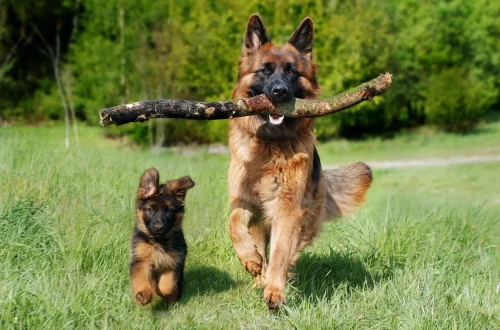
Mastering the Top Hand Technique for Sports and Fitness Success
Mastering the Top Hand Technique for Sports and Fitness Success
In the realm of sports and fitness, the quest for optimal performance is an ongoing journey. Athletes and enthusiasts alike are continuously seeking methods to enhance their skills, improve their techniques, and ultimately achieve their personal best. One of the often-overlooked aspects of athletic performance is the use of the hands, particularly the top hand technique. This technique plays a crucial role in various sports, from baseball and tennis to martial arts and weightlifting. Mastering this technique can lead to better control, improved precision, and increased power, which are essential for success in competitive environments.
The top hand technique is not just about grip or hand positioning; it encompasses the entire mechanics of how athletes utilize their upper limbs to facilitate movement, execute skills, and maximize their potential. Understanding the nuances of this technique can make a significant difference in an athlete’s performance, helping them to execute actions more effectively and efficiently. As we delve deeper into this topic, it becomes clear that mastering the top hand technique is not just beneficial for elite athletes but can also be advantageous for fitness enthusiasts looking to enhance their training routines. This article aims to explore the various facets of the top hand technique and how it can contribute to overall sports and fitness success.
Understanding the Mechanics of the Top Hand Technique
To fully grasp the importance of the top hand technique, one must first understand its mechanics. This technique involves the proper alignment and movement of the hand, wrist, and forearm in conjunction with the rest of the body. It starts with grip—how the athlete holds the equipment, whether it be a bat, racket, or weights. A firm yet relaxed grip is crucial; too tight can lead to tension and loss of control, while too loose can result in a lack of power.
The biomechanics of the top hand involve several key elements: wrist movement, forearm rotation, and shoulder alignment. For instance, in sports like baseball, the top hand’s role is to guide the swing and deliver power through the bat. When the wrist is cocked correctly, the athlete can generate a whip-like action, allowing for a more powerful and accurate hit. Similarly, in tennis, the top hand can dictate the angle and speed of the racket during serves and volleys.
Moreover, the top hand technique also plays a significant role in the transfer of energy throughout the body. When executed correctly, the energy generated from the legs and core can be efficiently transferred through the arms and into the hands, resulting in greater force production. This transfer of energy highlights the importance of body mechanics, as a well-coordinated movement will yield better results than relying solely on arm strength.
Practicing the mechanics of the top hand technique is vital for athletes at all levels. Regular drills focusing on grip strength, wrist flexibility, and forearm strength can significantly improve performance. Incorporating these drills into a training regimen not only enhances the top hand technique but also promotes overall upper body strength and coordination.
Application of Top Hand Technique Across Sports
The versatility of the top hand technique is one of its most compelling features, as it can be applied across various sports disciplines. Whether an athlete is swinging a bat, serving a tennis ball, or executing a martial arts move, the principles of the top hand technique remain consistent.
In baseball, for example, the top hand’s positioning is crucial for hitting success. A strong and stable top hand allows the batter to maintain control of the bat while generating power. Coaches often emphasize the importance of the top hand in drills, as it helps players develop a more effective swing path and contact point. This focus on the top hand can lead to improved batting averages and overall performance on the field.
In tennis, the top hand technique is equally important. Players use their top hand to control the racket during groundstrokes and volleys. A well-executed top hand technique allows for better spin, depth, and accuracy in shots. Coaches encourage players to practice their grip and hand positioning to enhance their overall game.
Moreover, in martial arts, the top hand technique is vital for executing strikes and grappling maneuvers. Proper hand positioning can enhance the effectiveness of punches and throws, allowing practitioners to deliver movements with precision and power. The top hand also plays a role in maintaining balance and control during various techniques, emphasizing its significance beyond just striking.
Even in fitness training, the top hand technique can impact performance. When lifting weights, proper grip and hand alignment can prevent injuries and enhance the effectiveness of the lift. Whether performing a deadlift, bench press, or overhead press, understanding the mechanics of the top hand can lead to better outcomes in strength training.
Overall, the application of the top hand technique is vast and varied, demonstrating its essential role in sports and fitness. Athletes and trainers should prioritize mastering this technique to reap the benefits in their respective disciplines.
Drills and Exercises to Enhance Top Hand Technique
To master the top hand technique, athletes need to engage in targeted drills and exercises that promote strength, flexibility, and coordination. These drills can be tailored to specific sports but can also be generalized to benefit overall athletic performance.
One effective drill for improving grip strength is the “Towel Twist.” This exercise involves holding a towel with both hands and twisting it as if wringing out water. This motion engages the forearm muscles and enhances grip strength, which is essential for maintaining control over sports equipment.
Another beneficial exercise is the “Top Hand Swing Drill,” particularly for baseball or softball players. In this drill, the athlete focuses solely on the movement of the top hand during a swing. Using a lightweight bat or a training bat, the athlete practices swinging while concentrating on keeping the top hand firm and aligned. This drill helps reinforce the mechanics of the top hand while promoting muscle memory.
For tennis players, the “Shadow Swing Drill” is an excellent way to practice the top hand technique without the pressure of a live ball. Players can practice their swings in slow motion, focusing on the role of the top hand in controlling the racket’s path. This drill can be done both on the court and at home, making it a versatile option for training.
Incorporating flexibility training into a routine is also crucial for enhancing the top hand technique. Wrist stretches and forearm exercises can improve the range of motion and prevent injuries. Simple stretches like wrist flexor and extensor stretches can be done regularly to promote flexibility and enhance performance.
Lastly, utilizing resistance bands for exercises like “External Rotations” can strengthen the rotator cuff muscles and enhance shoulder stability, which is essential for effective use of the top hand in various sports.
By integrating these drills and exercises into their training regimens, athletes can significantly improve their top hand technique, leading to greater success in their respective sports.
The Mental Aspect of Mastering Top Hand Technique
While physical training is crucial for mastering the top hand technique, the mental aspect should not be overlooked. Mental conditioning plays a significant role in an athlete’s ability to effectively utilize their top hand during performance. Visualization, focus, and confidence are key components that can influence the execution of this technique.
Visualization is a powerful tool that athletes can use to enhance their performance. By mentally rehearsing the movements involved in the top hand technique, athletes can create neural pathways that facilitate muscle memory. This mental practice allows athletes to envision themselves successfully executing their skills, boosting their confidence and performance under pressure.
Focus is another critical mental aspect that can impact the top hand technique. Athletes must learn to concentrate on their movements, tuning out distractions in their environment. Developing mindfulness techniques can help athletes maintain their focus during training and competitions, allowing them to execute their techniques more effectively.
Confidence plays a vital role in an athlete’s performance. When athletes believe in their abilities and the effectiveness of their techniques, they are more likely to execute movements with precision. Building confidence can be achieved through positive self-talk, setting achievable goals, and celebrating small victories during training.
Furthermore, working with a sports psychologist or mental coach can provide athletes with strategies to enhance their mental game. These professionals can help athletes develop coping mechanisms for pressure situations and improve their overall mental resilience.
In conclusion, mastering the top hand technique requires a multifaceted approach that encompasses physical training, mental conditioning, and continuous practice. By focusing on the mechanics of the technique, applying it across various sports, engaging in targeted drills, and honing their mental skills, athletes can achieve greater success in their sports and fitness endeavors.
**Disclaimer:** This article is for informational purposes only and does not constitute medical advice. For any health-related issues or concerns, please consult a qualified healthcare professional.




